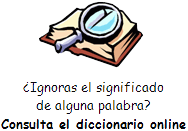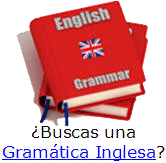 Imagine
that your friend is starting a new job today. She is traveling to work
by train. She takes the F train to West 4th Street. When she leaves the
station, her cell phone signal fails. So, she asks a stranger for
information: Imagine
that your friend is starting a new job today. She is traveling to work
by train. She takes the F train to West 4th Street. When she leaves the
station, her cell phone signal fails. So, she asks a stranger for
information:
Excuse me, where is MacDougal Street? Can you tell me where MacDougal
Street is?
You just heard a question asked in two ways. Did you hear the difference?
The first was a direct question; the second was an indirect question. In
today’s program, we will talk about indirect questions.
What's an indirect question?
Indirect questions are a more polite way to ask for information or make
requests. We often use them when asking something of strangers or people
we do not know well, including coworkers. We also use them when asking
for favors from friends or when we want to avoid sounding demanding.
When we make requests in English, we usually use the modal verbs can,
could and would. We also use these modals to begin many indirect
questions.
Here are a few common question phrases for indirect questions:
Can/Could you tell me…?
Do you know…?
Would you mind…?
Do you have any idea…?
Would it be possible…?
Forming indirect questions
To form an indirect question, we start with phrases like these. Then, we
add direct questions to them, but the word order changes.
Listen to our earlier direct and indirect questions again.
Here’s the direct question:
Where is MacDougal Street?
And the indirect question:
Can you tell me where MacDougal Street is?
You should notice two things about the indirect question:
First, it begins with the phrase “Can you tell me…?” Second, the rest of
the question -- where MacDougal Street is -- does not use the verb-subject
word order of a normal question. It uses the word order of a statement
and it is a noun clause.
So, to form an indirect question, again start with an indirect question
phrase, such as “Can you tell me…?”
Then, for information requests, add one of the six question words: where,
what, when, who, why or how. We call these “wh-question” words. For
example, you heard the word where in “where MacDougal Street is.”
“Yes or no” questions
But, some indirect questions do not contain wh-question words. These are
direct “yes or no” questions that we convert into indirect questions.
For example:
Has the game started yet?
That is a “yes or no” question. To form these into indirect questions,
we start with an indirect question phrase, such as “Do you know…?” and
then begin the noun clause with if or whether. Let’s listen to the
direct “yes or no” question again:
Has the game started yet?
This example uses the present perfect verb has started.
Now, let’s listen to how it changes into an indirect question using if
and whether:
Do you know if the game has started yet?
Do you know whether the game has started yet?
You’ll notice that, in the indirect examples, the has from the verb is
no longer separated by the subject, like in question word order. Instead
it appears together, as it would in a statement.
Here’s another example of a “yes or no” question. The direct question
uses the present continuous verb are coming:
Are they coming with us?
In the indirect question, the words “are coming” go together and we use
if or whether. Listen:
Do you know whether they’re coming with us?
Many English learners forget to keep statement word order in the noun
clauses of indirect questions. For “yes or no” questions, they may also
forget to use if or whether. For example, they may say: “Do you know are
they coming with us?”
But now that you know the correct way, you can avoid these two common
mistakes.
Asking for favors
Indirect questions are also useful when asking friends or other people
we know for a favor, especially when the favor requires a lot of effort.
Let’s listen to someone asking a favor directly:
Can you please help me move on Saturday?
Even with “please” in the direct question, it sounds a little too direct
for such a major request. Now, listen to the same question introduced by
the indirect phrases: “Is there any chance…?” and “Would it be possible…?”
Is there any chance you could help me move on Saturday?
Would it be possible for you to help me move on Saturday?
These indirect questions let the listener know that you understand that
the favor is a big commitment.
You can also ask a big favor indirectly with the phrase “I was wondering…”:
I was wondering if you could help me move on Saturday.
Notice anything different here? This example does not have a question
mark. It is not a question. However, when we use “I wonder” or “I was
wondering,” in a statement, we usually are seeking information, just
like a question does.
Using “I was wondering” is a very common way to politely ask a favor or
seek information in English without sounding too demanding.
Here’s another example. Listen to the direct question:
Did you finish the report?
And the indirect question:
I was wondering if you finished the report.
Now, you try it!
OK, now you try it. Make these direct questions into indirect questions:
What time is it?
Where is the music shop?
Why did you move to D.C.?
Can we meet on Monday?
Can you loan me your car?
Don’t forget to use statement word order after the indirect question
phrases. And remember that “yes or no” direct questions get if or
whether in indirect questions. |
 Sugerencias:
Sugerencias:![]() ). Utiliza el botón derecho del ratón y "guardar enlace" para
descargar el fichero a tu PC, tablet, Smartphone, etc.
). Utiliza el botón derecho del ratón y "guardar enlace" para
descargar el fichero a tu PC, tablet, Smartphone, etc.
![]() Escucha el audio
Escucha el audio
![]() ¿Quieres recibir en tu e-mail gratis y
periódicamente ejercicios, programas gratuitos, explicaciones y otros recursos
para mantener tu inglés sin esfuerzo? Apúntate a nuestro
cuaderno mensual de inglés.
¿Quieres recibir en tu e-mail gratis y
periódicamente ejercicios, programas gratuitos, explicaciones y otros recursos
para mantener tu inglés sin esfuerzo? Apúntate a nuestro
cuaderno mensual de inglés.




